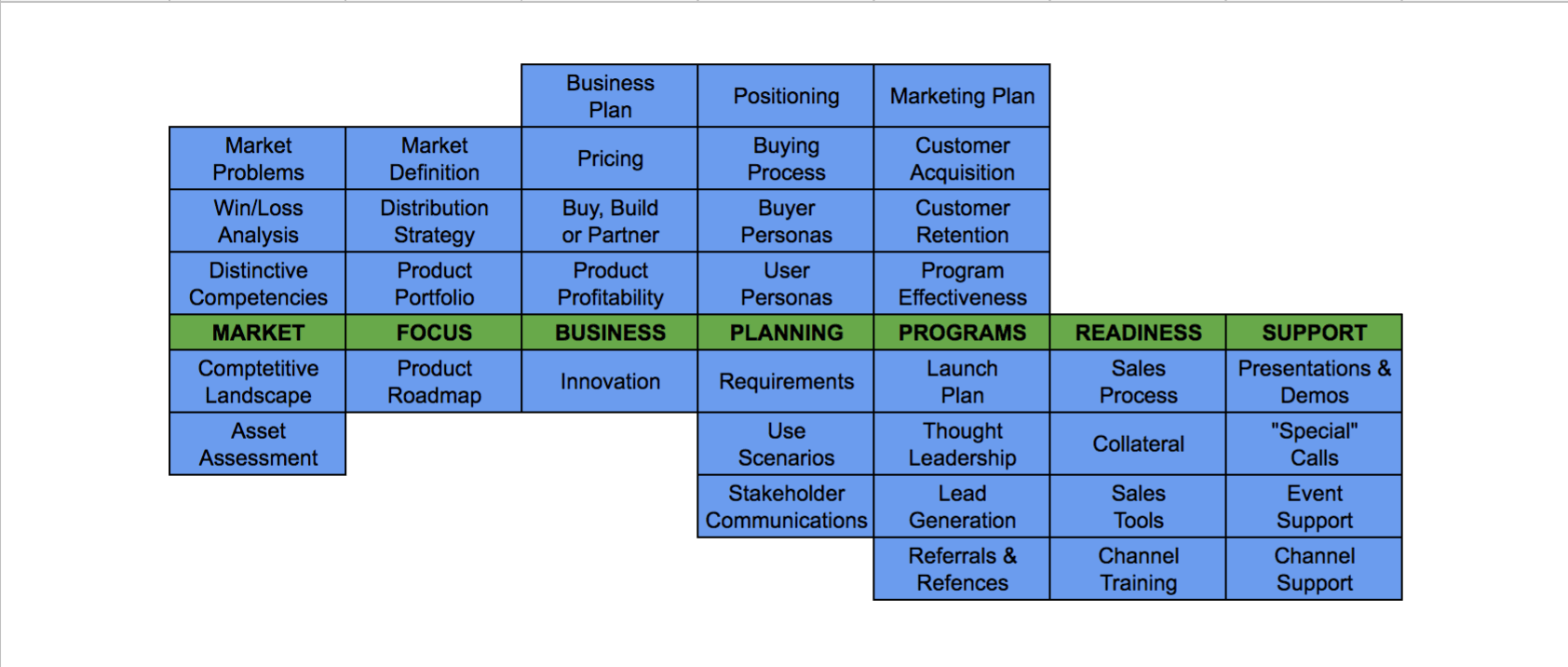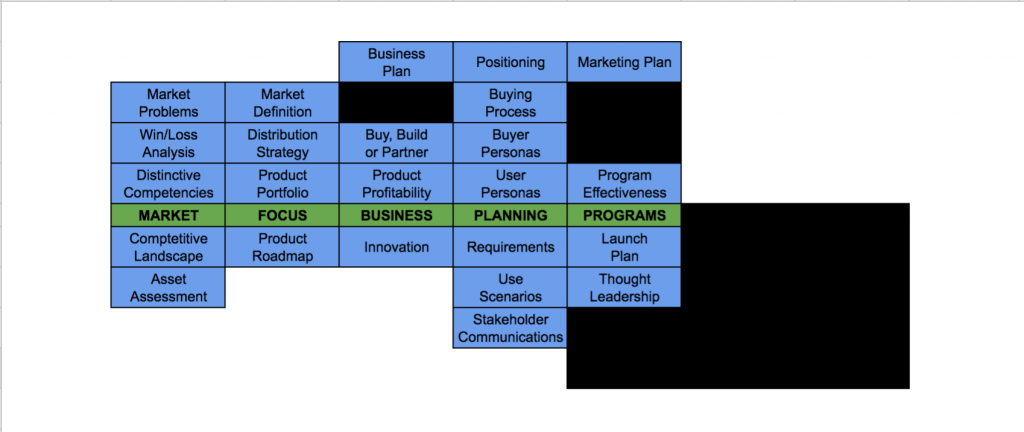What Is Internal Product Management
To understand what Internal product management is, it’s helpful to start by understanding what product management in general is.
For that, I look to Melissa Perri, who provided one of the better definitions of product management (there are plenty) in her Product Institute Class on Product Management: “A product manager effectively solves problems for users while achieving business goals.”
I prefer Melissa’s definition of product management because it places emphasis on the outcome, (solving problems for users while achieving business goals) rather than the output (a product) that you use to achieve that outcome . In order to practice effective product management, you have to understand the need to satisfy and the business goals you want to achieve in order to design the right product.
Internal product management is a subset of product management with a more focused outcome and output. The outcome of internal product management is you solve problems of users internal to your organization or enables your organization to satisfy the needs of your customers.. The output of internal product management is products that your organization does not offer for sale to others, but rather uses to support its various business activities. You may find it helpful to think of these as internal products.
Examples
The clearest examples of when internal product management is relevant is to list internal products to which it is applied.
- Business Intelligence
- Human Resources Information Systems (HRIS)
- Customer Relationship Management (CRM)
- Enterprise Resource Planning (ERP)
- Internal Tools
- Claims Administration tools
- Event Registration Systems
- Membership Systems
- Accounting Systems
- Corporate Websites*
- Mobile apps*
* These items are used by both people inside and outside your organization and are typically created or enhanced as a result of an organization’s digital efforts. I include them as examples of internal products because your organization does not generally sell these products and therefore have many of the same considerations of the other products on the list. They also have some of the additional demands of products for sale in that you have uncertainty around how they can best provide the desired outcome of your customers.
The specific internal products your organization has depends on the nature of your organization.
The thing that all of these examples have in common is that they are built or implemented in order to support your organization’s business activities and are not directly sold to customers.
Who Does Internal Product Management
Internal product management is typically done by product people filling the role of business analyst, product owner, product manager, or project manager. An explicitly defined role of internal product manager is not extremely common in practice.
Why Use Internal Product Management
While project management is in widespread use to deliver internal products, this paradigm causes several issues. In addition, while business analysis and product ownership provide some benefits in dealing with the what and and why of internal products, they also leave some key activities out. Here is how internal product management addresses the issues inherent in each of these approaches and helps them to practice the three habits of highly effective product people:
- Focus everyone on outcome over output
- Build and maintain shared understanding
- Make sure decisions get made.
Internal product management and project management
Typically systems and applications such as those listed in the example are maintained through the use of projects as defined by the Project Management Institute: a temporary endeavor undertaken to create a unique product, service or result. Project management is generally based on a set of assumptions that while they hold true for many types of endeavors generally aren’t valid for systems and applications of the type that can be thought of as internal products.
The following compare/contrast of products and projects are based on a presentation from Allan Kelly and other work of the #noprojects crowd.
Product management measures success based on outcome whereas project management measures success based on staying within time, cost, and scope (output) constraints.
Software products (the successful ones at least) continue to change as your users needs change or you get a more refined understanding of those needs. Projects are temporary.
Products are maintained on an ongoing basis by the same team. Keeping a team together builds knowledge capability and performance. Projects are performed by temporary organizations which disband after the project is completed. That dissolution of the team destroys knowledge capability and performance.
Projects typically grow to be quite big in order to pass through the typical budget processes that most organizations have. This results in large deliveries with considerable lead time in between them. When a team is able to work on a continuous basis on a product, changes can be delivered in small batches which helps to reduce risk due to rapid feedback and increase return because users have access to new capabilities sooner.
Internal product management and business analysis
Effective business analysis, as described by the International Institute of Business Analysis (IIBA) closely resembles many aspects of product management, with three main differences in practice.
- Product management places a bigger emphasis on making decisions whereas business analysis supports decision making.
- Product management places an equal emphasis on the needs of users and the organization, where business analysis primarily focuses on the needs of the organization.
- Product management deals with understanding the needs, delivering a solution, and marketing that solution externally, whereas business analysis primarily focuses on understanding needs and suggesting a solution.
The third difference is not as relevant in an internal product situation, but the first two differences are significant and tend to reduce the perceived value of business analysis in many organizations.
Internal product management incorporates many of the activities common between product management and business analysis activities as well as a focus on user’s needs and explicit decision making.
Internal product management and product ownership
Product ownership provides a great deal of guidance on how the decision maker and subject matter expert interacts with the team delivering a solution. It is fairly silent on how to know whether you’re leading that team to deliver the right solution, or even solving the right problem.
The techniques included in product management that seek to understand user’s problem, determine the value in solving that problem in alignment with the organization’s strategy and designing a solution that is well suited for a users help to fill that gap.
How to Use Internal Product Management
Product management is a complex endeavor with many different aspects that vary in the importance depending on the context in which you work. I find that the Pragmatic Marketing Framework provides a good overview of Product Management in general. This framework is based on product management focused on solving the needs of users outside your organization.
To understand internal product management deeper, here are the boxes from the Pragmatic Marketing Framework that are relevant in internal product management.
Caveats and Considerations
One notable exception to internal product management focusing on internal users are public facing websites and mobile apps where the users are customers or potential customers of the organization’s products or services. I consider work on websites to be internal product management because the website or app itself is generally not sold, and because these websites and apps tend to support the organizations business activities. These products have some of the unique characteristics of the other internal products (heavy influence by stakeholders) and externally sold products (you need to understand your customers and their needs).
People practicing internal product management may have a better sense of when there is a problem to solve, know for whom they are solving that problem, and don’t have as much of a need to participate in the sales and marketing activities that product managers focused on products and services that are sold outside the organization are responsible for.
Product people practicing internal product management may have to deal with more internal politics than product managers dealing with products for external sale because users and stakeholders tend to have greater influence in the decision making process, or expect that they should have more influence.
Internal product manager is currently not a role or job title commonly used in practice. The activities described here are rarely referred to as internal product management. This post is an attempt to encourage product people delivering and maintaining internal products to approach their work as if they were performing product management to ensure that they focus on outcome, build a shared understanding, and make sure decisions get made.
Additional Resources
Product Management Skills For Non-Revenue Product Owners by Rich Mironov on Mironov Consulting
Are You an internal product manager stuck in a box? by Andrew Dickenson on Product Focus
Building Internal Solutions is Product Management on This Is Product Management podcast
Life as an Internal Product Manager and How to Make It Work by Tia Peterson

